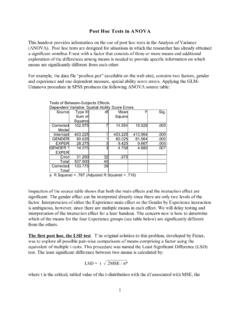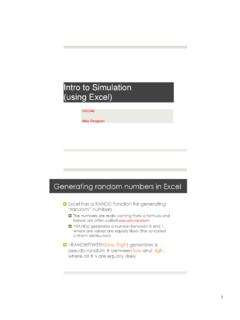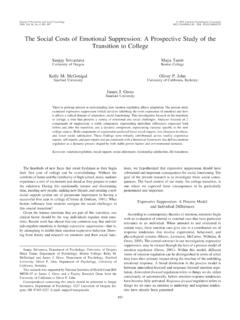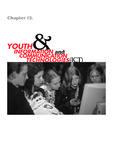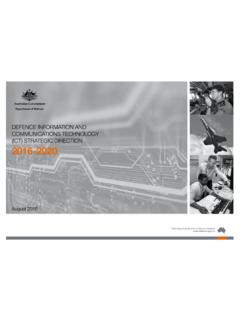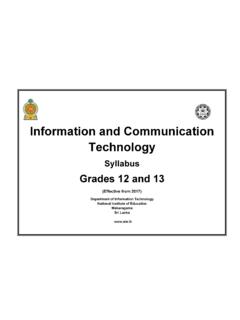Transcription of Introduction to Information and Communication Technology ...
1 Introduction to Information and Communication Technology in Education. (Moursund). Introduction to Information and Communication Technology in Education "Smooth seas do not make skillful sailors." (African Proverb). "You can lead a horse to water, but you can't make it drink." (A familiar adage.). These materials are Copyright (c) 2005 by David Moursund. Permission is granted to make use of these materials for non-commercial, non-profit educational purposes by schools, school districts, colleges, universities, and other non-profit and for-profit preservice and inservice teacher education organizations and activities. 1/1/05. David Moursund Teacher Education, University of Oregon Eugene, Oregon 97405. Contents Preface.
2 2. 0. Big Ideas .. 4. 1. Foundational 14. 2. Gaining Increased ICT in Education 28. 3. Compelling and Second Order Applications .. 36. 4. Generic Computer 48. 5. ICT as Curriculum 56. 6. ICT as an Aid to Teaching and 64. 7. ICT in Assessment and Accountability .. 77. 8. ICT in Special and Gifted 92. 9. Summary and Index ..120. Page 1. Introduction to Information and Communication Technology in Education. (Moursund). Preface "Without a struggle, there can be no progress.". (Frederick Douglass, 1819-1895). "Men occasionally stumble over the truth, but most of them pick themselves up and hurry off as if nothing ever happened." (Sir Winston Churchill). Information and Communication Technology (ICT) is a major challenge to our educational system.
3 This book is designed for use by PreK-12 preservice and inservice teachers, and by teachers of these teachers. It provides a brief overview of some of the key topics in the field of Information and Communication Technology (ICT) in education. I wrote this book to help serve the needs of my students in a course titled Teaching and Learning in the Digital Age. You can access a syllabus for that course at ~moursund/DigitalAge1 The mission of this book is to help improve the education of PreK-12 students. A three- pronged, research-based approach is used. Goal # 1 of this book is to help you increase your expertise as a teacher. There is substantial research that supports the contention that students get a better education when they have better teachers.
4 Goal # 2 of this book is to help increase your knowledge and understanding of various roles of ICT in curriculum content, instruction, and assessment. There is significant research to support the benefits of ICT in these three areas. In addition, ICT is now an important content area in each of the disciplines that you teach or are preparing to teach. Goal # 3 of this book is to help you increase your higher-order, critical thinking, problem-solving knowledge and skills. Special attention is paid to roles of ICT as an aid to solving complex problems and accomplishing complex tasks in all curriculum areas. Research suggests that US schools are not nearly as strong as they could be in helping students gain increased expertise in problem solving and critical thinking.
5 Now that I have stated goals for this book, I want to make clear a non-goal. This book is not designed to help you learn specific pieces of software. The typical first ICT in Education course for preservice and inservice teachers has a strong focus on learning to make use of various pieces of hardware, software, and connectivity. This book is not designed as a substitute for, or a major aid to, learning these rudiments of ICT that are now being learned by many students before they get to college. This book is designed to addresses some of the weaknesses of typical first or second ICT in education courses that overemphasize learning computer applications and underemphasize other aspects of the field of ICT in education.
6 The book focuses on general topics such as ICT in curriculum, instruction, assessment, increasing problem-solving expertise of students, and in other aspects of a teacher's professional work. The emphasis is on higher-order knowledge and skills. Alternatively, this book can be used in a second ICT in education course for preservice and inservice teachers, building on the basic skills taught in a first course. However, throughout the Page 2. Introduction to Information and Communication Technology in Education. (Moursund). book we argue that basic skills (lower-order knowledge and skills, rudimentary use of some of the general purpose pieces of computer software) should be integrated in with higher-order knowledge and skills.
7 The prerequisite for a course using this book is an introductory level of knowledge and skill in using a word processor in a desktop publication environment, using email, and using the Web. Nowadays, large numbers of students meet this prerequisite by the end of the 5th grade, since such knowledge and skills are only part of the 5th grade standards for students established by the International Society for Technology in Education (ISTE NETS ). Increasingly, instruction in such basic skills is not considered to be an appropriate part of a college-level curriculum that carries credit towards a college degree. As you read this book, you will come to understand that ICT in education is a broad, deep, and rapidly growing field of study.
8 ICT has the potential to contribute to substantial improvements in our educational system. To date, relatively little of this potential has been achieved. Moreover, the pace of change of the ICT field currently exceeds the pace of progress in making effective use of ICT in education. Thus, the gap between the potentials and the current uses of ICT to improve PreK-12 education is growing. ICT is a very rapidly changing field. What can you learn, and what can you help your students learn, that will last for decades or a lifetime, rather than just until the next new, improved, better, faster, more powerful ICT product appears on the market? This book will provide you with some answers. David Moursund January 2005.
9 Page 3. Introduction to Information and Communication Technology in Education. (Moursund). Chapter 0. Big Ideas "Mankind owes to the child the best it has to give.". (United Nations Declaration of the Rights of the Child, 1959). "Civilization advances by extending the number of important operations which we can perform without thinking of them." (Alfred North Whitehead). It is assumed that you are reading this book because you are a preservice or inservice teacher, and/or because you are interested in learning more about how computers can contribute to improving our educational system. Relatively few people thoroughly read an entire textbook. Their enthusiasm, interest, and energy level tends to wane as the book drags on and on.
10 Thus, they often don't reach the last chapter, which might be the most vital. To address this problem, I have done two things. First, I have kept this book relatively short. Second, I have placed a large chunk of my intended last chapter at the beginning. Since it comes before the ordinary first chapter, I have numbered it Chapter 0. Chapter 0 contains a brief Introduction to and summary of the Big Ideas (the unifying, very important themes) covered in this book. I hope that your reading of this chapter will lead you into reading subsequent chapters. When (and if) you reach the end of this book, please come back and read Chapter 0 again. You may be pleasantly surprised by how much you have learned! The field of Information and Communication Technology (ICT) combines science and Technology .

